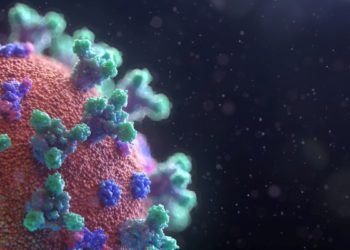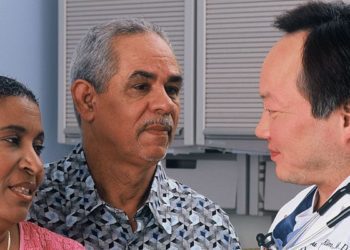Autoantibodies may precede symptom onset in Sjögren’s Syndrome
Image: PD
1. 66% of patients with Sjögren’s Syndrome (SS) in this study had autoantibodies detected in the serum prior to symptom onset and diagnosis of SS.
2. Multiple autoantibodies were present in serum prior to SS diagnosis, but this study did not find any significant differences between time from a positive test to symptom onset.
Evidence Rating Level: 3 (Average)
Study Rundown: Sjögren’s Syndrome (SS) is an autoimmune disease that attacks exocrine glands causing dry mouth and dry eyes among other symptoms. Clinically, SS has important implications on oral health, digestive health, and has been found to increase the risk of certain lymphomas. Multiple autoantibodies have been found in the serum of SS patients, but little research has explored positive serologies before SS onset. This study included 44 individuals (41 females and 3 males) from the registry of SS patients from Malmö University Hospital in Malmö, Sweden. The authors found that 66% of SS cases had detectable autoantibodies before clinical diagnosis of SS. They found no statistically significant difference in time from positive test to symptom onset. The odds ratio for developing SS after a positive serum autoantibody test was highest for anto-Ro60/SSA and anti-La/SSB. A strength of this paper is the relatively long time period for which serologies were available for patients. Weaknesses of the paper include the small sample size and the use of self-reported time of symptom onset. Ultimately, larger studies with more individuals will be needed to determine the utility of serum autoantibodies as screening tools for SS.
Click to read the study, published today in JAMA
Relevant Reading: American College of Rheumatology Classification Criteria for Sjögren’s Syndrome: A Data-Driven, Expert Consensus Approach in the SICCA Cohort
In-Depth [retrospective cohort study]: This study included 44 individuals from the registry of SS patients at Malmö University Hospital and 44 matched controls. Twenty nine (66%) individuals had at least one of five positive serologies—ANA, rheumatoid factor IgM (RF), anti-Ro60/SSA, anti-Ro52/SSA, anti-La/SSB—prior to clinical diagnosis of SS. The median time period between detectable autoantibodies and symptom onset was 5 years for ANA, 6 years for RF, 4 years for Ro60/SSA, 5 years for Ro52/SSA, and 4 years for La/SSB. These time periods were not statistically significant (p=0.41). The odds ratio for developing SS with elevated autoantibodies was highest for anti-Ro60/SSA and anti-La/SSB (OR 15.0, 95% CI 1.9-118.5 and OR 10.0, 95% CI 1.2-81.5, respectively). The odds ratio for being diagnosed with SS was 5.8 (95% CI 1.8-18.0) with an elevated ANA and was 4.5 (95% CI 1.4-14.4) with an elevated RF.
By Jeffrey Cohen and Brittany Hasty
More from this author: Most physicians point to others to control healthcare costs, QRS morphology and duration associated with cardiac resynchronization outcomes, Repeat bone mineral density testing may not improve prediction of fracture outcomes, Stent type may not be related to adverse cardiac events after surgery, Risk-reduction counseling with HIV testing may not decrease rates of sexually transmitted infections
©2012-2013 2minutemedicine.com. All rights reserved. No works may be reproduced without expressed written consent from 2minutemedicine.com. Disclaimer: We present factual information directly from peer reviewed medical journals. No post should be construed as medical advice and is not intended as such by the authors, editors, staff or by 2minutemedicine.com. PLEASE SEE A HEALTHCARE PROVIDER IN YOUR AREA IF YOU SEEK MEDICAL ADVICE OF ANY SORT.

![No benefit with hydroxychloroquine (Plaquenil) over placebo in Sjogren’s Syndrome [JOQUER Trial]](https://www.2minutemedicine.com/wp-content/uploads/2014/07/Sjogren_syndrome_2-350x250.jpg)





